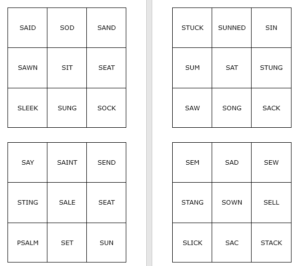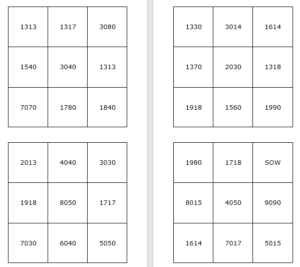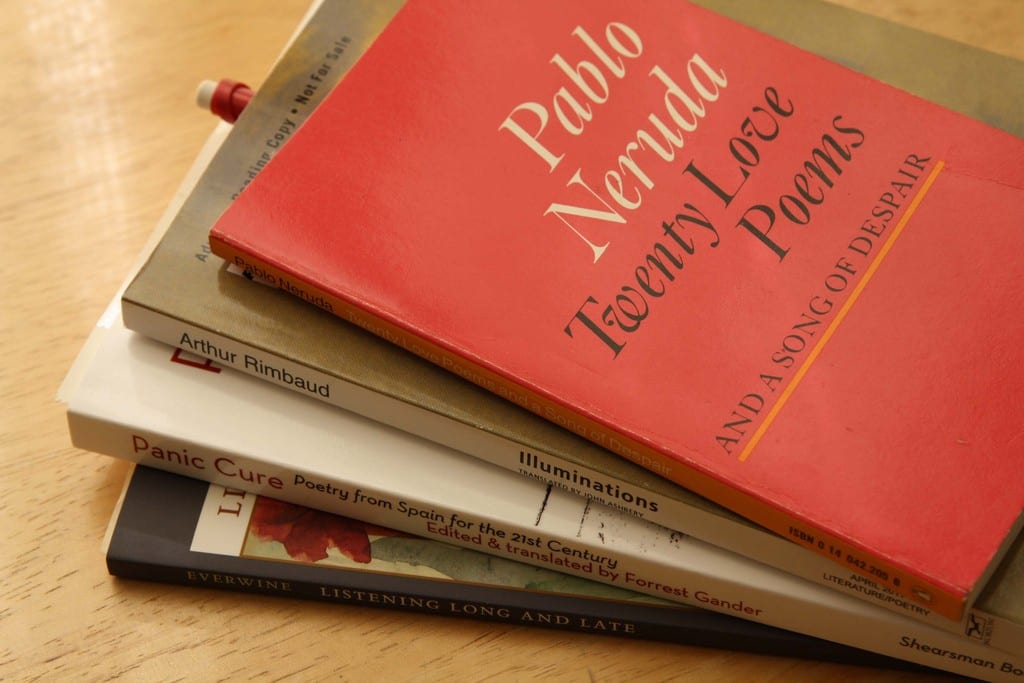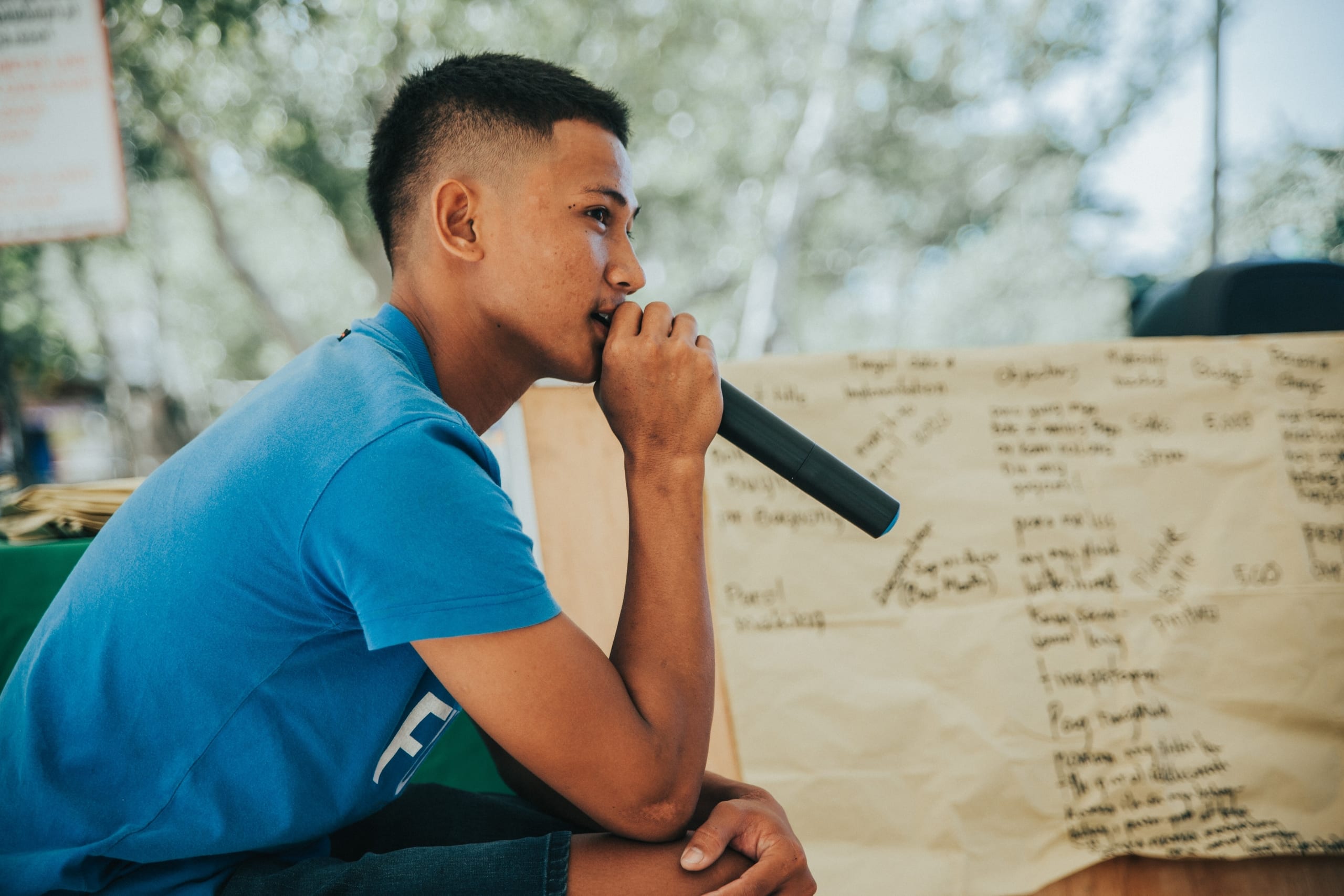Are you looking for a way to liven up your listening classes? Then let’s talk about creative ESL pronunciation activity – Phonetic Bingo.
Phonetic Bingo is a game for learners from beginner to advanced levels and from elementary age to adult classes.
This can be used in listening comprehension lessons, or in pronunciation classes with an orientation toward listening.
So, instead of just listening to recordings of people talking, you have another option. Using this game, you can teach learners how to distinguish specific speech sounds from others.
It can also be used to identify weak areas, giving you and them ideas about the speech sounds they need to work on.
The following details will give you a better idea of what’s needed and how the game is played.
Materials Needed:
You’ll need to make bingo cards, word strips, and covers for this game. Each component is discussed under the headings below.
Bingo Cards
The first thing you’ll need to do is make bingo cards based on specific speech sounds. This will depend on the phonemes (speech sounds) you intend to target and/or the weak areas that need more development.
Your students will need to be familiar with these sounds as you might have to use them to teach the differences, i.e. contrasting sounds.
I use the ASCII (Unicode) version of the International Phonetic Alphabet (IPA) shown in this vowels and consonants chart.
The advantage of using the ASCII version of IPA is that it can be used to transcribe words on a computer without the use of special fonts.
What to Incorporate in the Bingo Cards
For teaching pronunciation, there are many guides available, but the IPA is the most popular phonetic guide. At OnTESOL, it’s what we use in our teacher training courses. You can download a free copy of the IPA chart here.
But whichever guide you decide on, just be sure to stay with it, so your learners don’t get confused.
As much as possible, try to incorporate minimal pairs into your cards. Minimal pairs are words that differ by one sound and differ in meaning.
For example, send /send/ and sand /s@nd/ differ by only one speech sound /e/ vs. /@/ and convey two different ideas; everything else is the same: the /s/, /n/, and /d/ sounds (/s*nd/).

The idea is to put similar sounding words on different cards. In the example cards above, the target speech sounds are a combination of minimal pairs beginning with /s/ and contrasting vowel sounds (e.g. /@/, /e/, /I/, /i:/, /ei/, /a:/, /^/, and /o:/).
Resources To Help You Get Started
You’ll need a dash of creativity to think of words, but there are some good websites that can give you some ideas (e.g. englishclub.com, shiporsheep.com, allesl.com, and englishspeaklikenative.com).
Or, just sit down and think of a string of minimal pairs like sing /i:/, sang /@/, sung /^/, and song /o/, then put each on different cards. Create as many cards as you need for your class size (5, 10, 20).
Getting started might be a little tedious, but with an initial investment of time and effort, you can have a game and materials that will last a career.
Word Strips
Next, create the callout word strips.
These are the words that will be called during the game in phonetic bingo and they must match all the words on the cards.
Be sure to include each word from all the cards to give everyone an equal chance to get a bingo.
If you plan on having students read the strips (instead of you), you can add the phonetic spelling as well. This helps them sound out each word.
Have the phonetic spellings is also helpful when you review, so learners can match speech sounds with symbols.
Covers
Just like regular bingo, they must cover the called words on their cards. I use yellow construction paper cut into big dots.
When a student hears (or thinks they hear) a word on their card, they place a dot on the word.
Read: Have Fun Teaching Pronunciation
Warm-Up
Now it wouldn’t be fair if you didn’t go over the target sounds or sample words before playing. List some model words and review pronunciation with your class. After that, game on!
Play
Prior to playing, you or the class can decide on the types of bingo to play (e.g. cover all, one-way, x, double bingo, four corners, etc.).
As in regular bingo, one person will draw and call out the word. Initially, the person calling should be you, the teacher, to reinforce the correct sounds.
Players will cover the word if it’s on their bingo card. But, beware—mistakes may happen as the player can miss the correct sound.
So, when “bingo” is called, you’ll need to double-check that the words called to match the words covered on the card. The game ends when a good bingo has been made. After that, play again!
Twist
If you want to make it more interesting, have students do the calling. It’s probably best to start with you, the teacher, but after they’re familiar with the game and the sounds, they can.
This way you can check learner pronunciation as well. As the teacher, you can make judgment calls as to the accuracy of pronunciation by the callers.
Variation
If you want to get away from words, you can use numbers instead. You can use this variation to teach learners how to distinguish between 50 /fIf-di:/ and 15 /fIf-ti:n/ for example. See the image below for card ideas.
Other than the numbers, everything else stays the same.

Prizes
Here’s where you’ll need a little more creativity. It can be something as simple as extra break time, a piece of candy, or something more elaborate such as a keyring.
It’s up to you how you want to manage the prizes. But, be advised, in a one-hour class, you’ll probably be able to get through 3–5 games. So, be sure you have enough.
Sometimes children’s classes scream for prizes!
Review
At the end of the game phase, review some of the more difficult words and sounds. This helps reinforce learning. Drills are one way to do it.
But be sure to wrap up the game. It wouldn’t be complete without ending on target.
Closing Comments
So that’s how you do it! Now you have an option to make your listening classes more fun. The best thing is, it’s a phonetic bingo learning game!
And you can use it with all ages and levels because they’re not creating sentences but being taught to distinguish words and speech sounds.
As a result, students will be more capable of identifying specific sounds and even produce them more clearly as a result.
We’d love to know your experience with this. If you decide to give it a go, feel free to share your results with us.
Recommended Reading:
Teaching Pronunciation: From Mechanical Practice to Spontaneous Conversations






